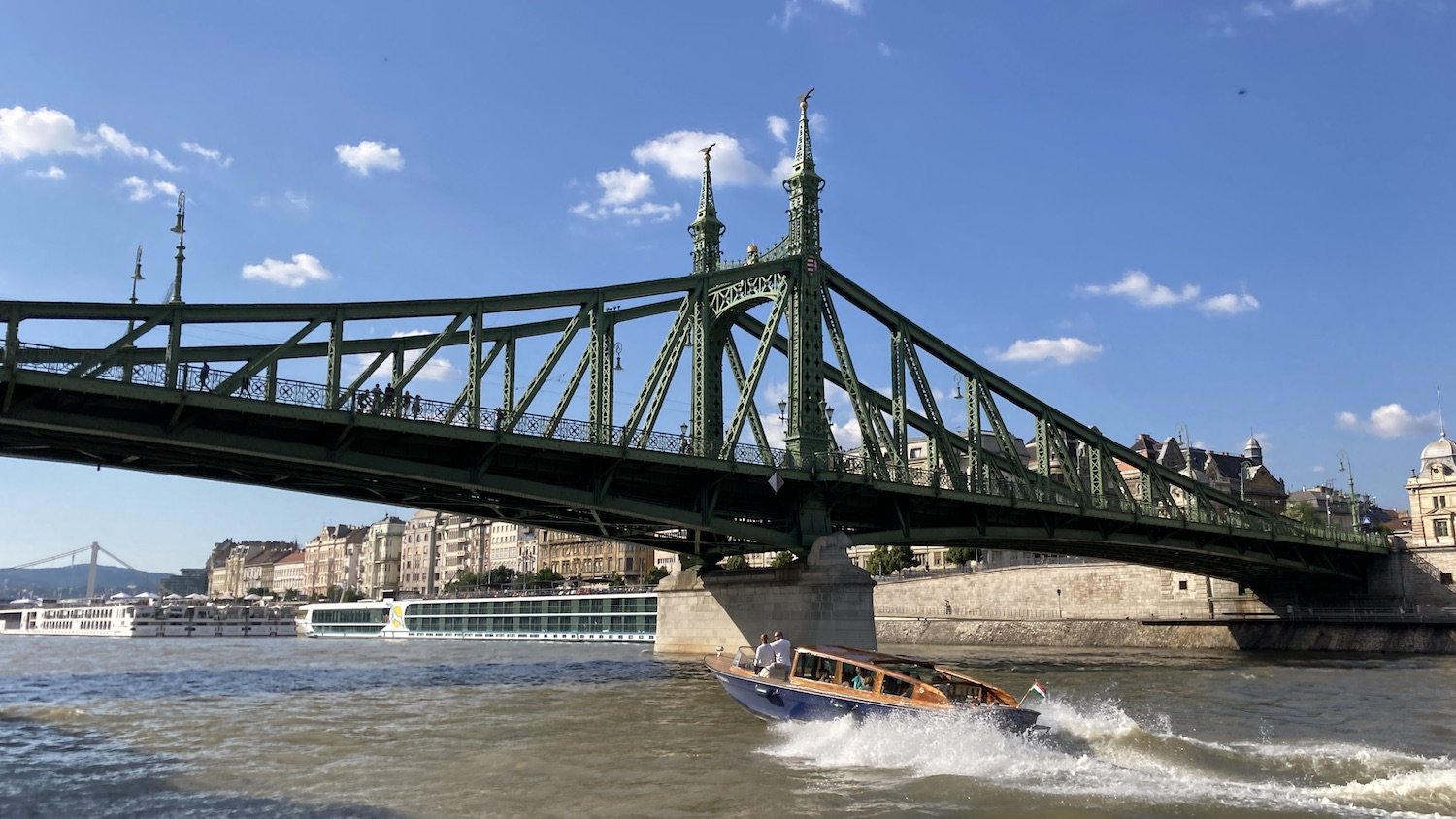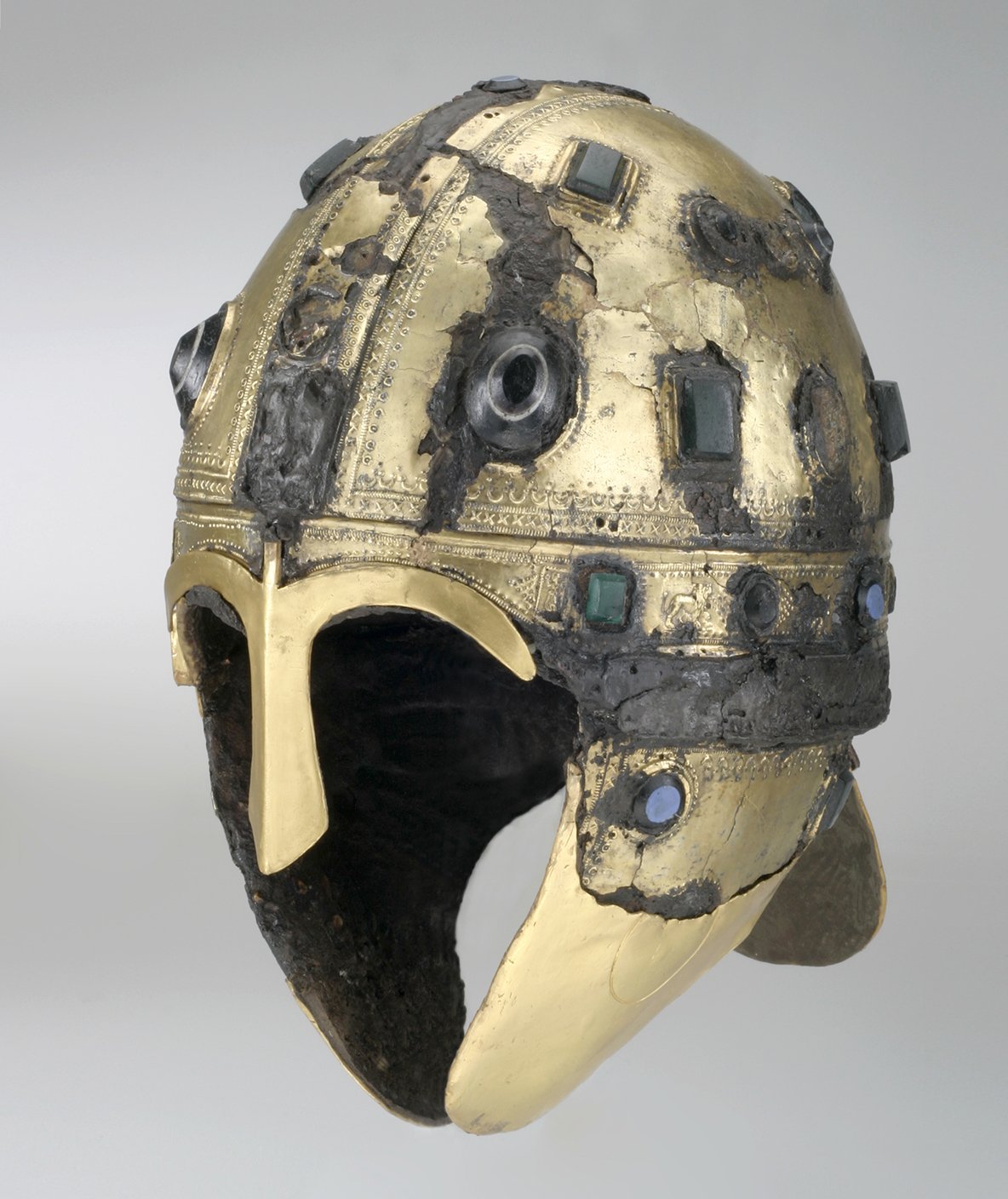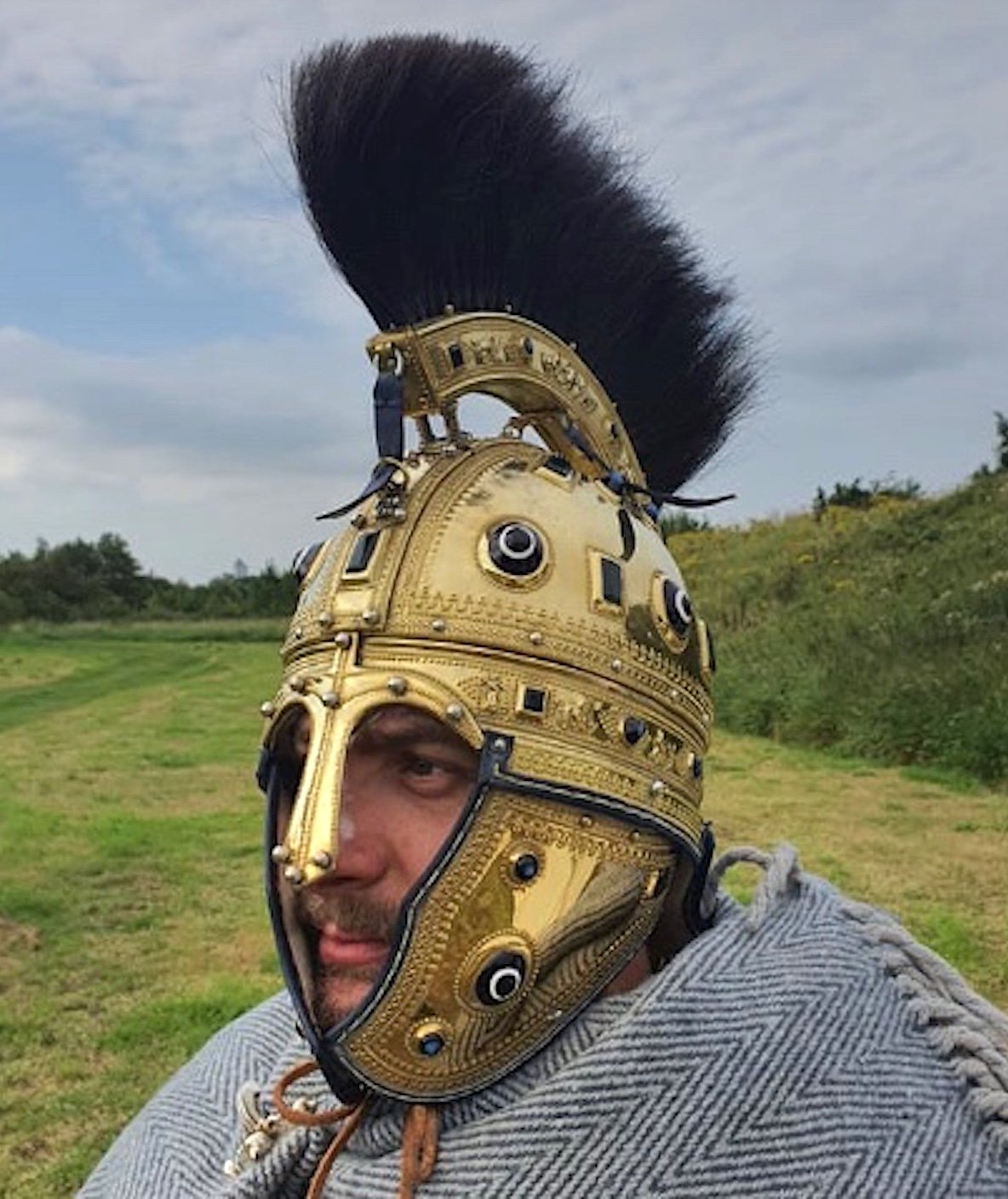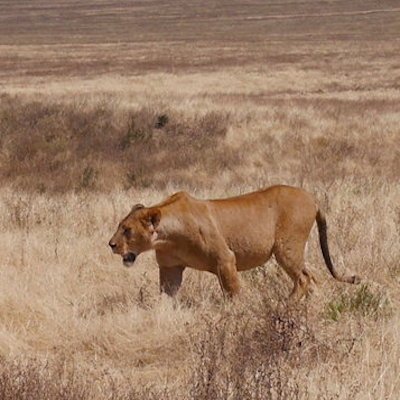We said goodbye to the crew of the AmaVerde and stepped to the dock at Budapest. It was the last stop of our cruise along the “Romantic Danube.” We had traveled some 500 miles, approximately one-third of the run of this magnificent river. We had floated through beautiful swaths of Germany, Austria, Slovakia, and Hungary. But now we were down to the final 24 hours. Vicki needed to return home and I needed to continue on to my summer work in Israel/Palestine.
I was out of quarantine, finally, but morose. Vicki was her ebullient self.
“I hate the last day of a vacation,” I muttered.
“Come on,” she chided. “If everyday was a vacation, it wouldn’t be a vacation.”
Entering Budapest by water.
We had a free day. That was the good news.
It was a Monday. That was the bad news. All museums in Budapest, including the Aquincum Museum, were closed on Monday.* This was a bummer, as the excavations of the Roman ruins of Contra-Aquincum* are spectacular enough to have earned the nickname, “the Hungarian Pompeii” (and Budapest isn’t exactly a city that you just happen to “swing by” on another day!).
We consoled ourselves with food. After a week of eating unrecognizable cusine with unpronounceable names, we headed to the Bamba Marha Burger Bar. They promised “the best burger of the city.” They may have been right. The fries were good too.
While ingesting my bomba bomb and looking at my phone, I discovered other Roman remains near us. The foundations of a fort were just downstream from our position on the Buda side of the Danube (We had learned that Budapest is a combo-name, with Buda referring to the “hilly” side of the river and Pešt referring to the “flat” side of the river.).
The site was always open and was located in Március 15 tér, “March 15 Plaza,” at the base of the modern Erzsébet Bridge.** We set out on foot and found the place a short time later.
The ruins were hidden beneath concrete pavers and opaque glass.
Finding the site was the easy part; appreciating it was hard. The remains were covered by concrete pavers and opaque glass. It was impossible to see what was what. There was no onsite map or signage.
Walls could be discerned through dirty glass, but no layout was recognizable.
A little digital enhancement revealed monumental walls under the glass.
Only later, online, did I find this (see image below). I doctored the photograph so you could see the fort (in red) superimposed over the modern features of the plaza. I learned that the original Roman fortress was likely built at the end of the third century AD, was squarish in shape, and had towers at regular intervals. It measured some 86 by 84 meters in size. It was yet another control point in the Danubian limes, or frontier line, along the river. It may have been called Castellum contra Teutanum, or “Fortress opposite the Teutanus stream.”
Ádám Németh’s virtual reconstruction of Castellum contra Teutanum. See the website here: https://budapestlocal.com/budapest-through-centuries-roman-empire (accessed 6/16/2022).
Had we been able to visit the Aquincum Museum in Budapest (it was closed, remember), we would have seen some of the artifacts excavated from this fortress including this magnificent helmet. It is believed to have belonged to a high-ranking army officer once stationed at Castellum contra Teutanum.
Helmet discovered in 1898 among the Roman remains from Castellum contra Teutanum. It is a “Ridge Helmet” of the Berkasovo type. Image from here: https://seuso.mnm.hu/en/the-seuso-treasuer/chronology/helmet-march-15-squere-budapest-castellum-contra-teutanum (accessed 6/17/2022).
Reconstruction of Roman helmet produced by the Pustelak Brothers Workshop. Image from here: https://www.facebook.com/media/set/?set=a.1205528923131033&type=3&comment_id=1205538039796788
While not exactly artifactual, two other interesting aspects of the March 15 Plaza caught our eye. Both offered conclusions to our Roman ruminations.
The first was a piece of art by Tar István. It was titled Barbárok harca a rómaiakkal or “Barbarian Struggle with the Romans.” It was an enormous sculpture in metal (six feet tall?), originally designed as a fountain. It captured the force of a mob of Roman soldiers: mechanical, anonymous, and abstract. Some were on foot, some on horse. On either side of the mob, two lunging figures attempt to escape the Roman orbit. It is quite powerful.
Roman footsoldiers of the Barbárok harca a rómaiakkal.
A male figure stretches out from the mob on one side of the sculpture. A female figures reaches out from the other side.
We failed to notice a second artistic aspect of the plaza when we first arrived. We caught it before we left. A scale model of the course of the Danube had been engraved in the pavers. In following the etching around the trees and tourists we gained a new sense of scale as well as the relative placement of Roman forts.
We followed our own experience of the Danube. This time by foot. Romantic? Only for a kooky archaeologist. We walked along the barbarian side, eying the Roman positions across the river (blame it on our German DNA).
The Danubian Limes served the empire from the middle of the first century to its collapse in the middle of the fifth century. Some of the forts would be rebuilt and refashioned, but none seemed to have lasted beyond the seventh century. Given the distance that the Limes covered, the expense required to maintain the line, and the threats that regularly faced it, it was really quite an organizational accomplishment.
Vicki and I enjoyed lounging about the March 15 Plaza that summer afternoon. It marked the end (for now) of our “Romantic Danube.” We walked back to our hotel along the bank of this historic river. It rolled on, as it has done for centuries, muddy, irresistible, silent. Imagine if it had a voice.
The Danube was a witness to the rise and fall the Roman Empire.
Vicki stands on the barbarian side of the Blue Danube, her toes in “the water.” Opposite her is a representation of the major Roman camp where Budapest, Hungary, is located today.
*Contra-Aquincum is the best known name for Roman Budapest. Ptolemy, however, refers to it as Pession (Πέσσιον). Geography iii.7.§ 2.
**”March 15 Square” is named after the day in 1848 when the revolution against the Austrian Habsburgs began in Hungary.
Bible Land Explorer is adding a new adventure to our offerings. We will be hosting an African safari in 2023. Between July 27 and August 5 we will return to the big game parks in Tanzania, including the Serengeti, Ngorgorono Crater, and Tarangire. We will “jeep” and tent camp (or “glamp,” really!) in the Serengeti and follow the Great Migration of the wildebeest. It is one of the wonders of the natural world. This expedition is already half-full. If you are interested in signing on for a wild time, contact BibleLandExplorer@gmail.com.










